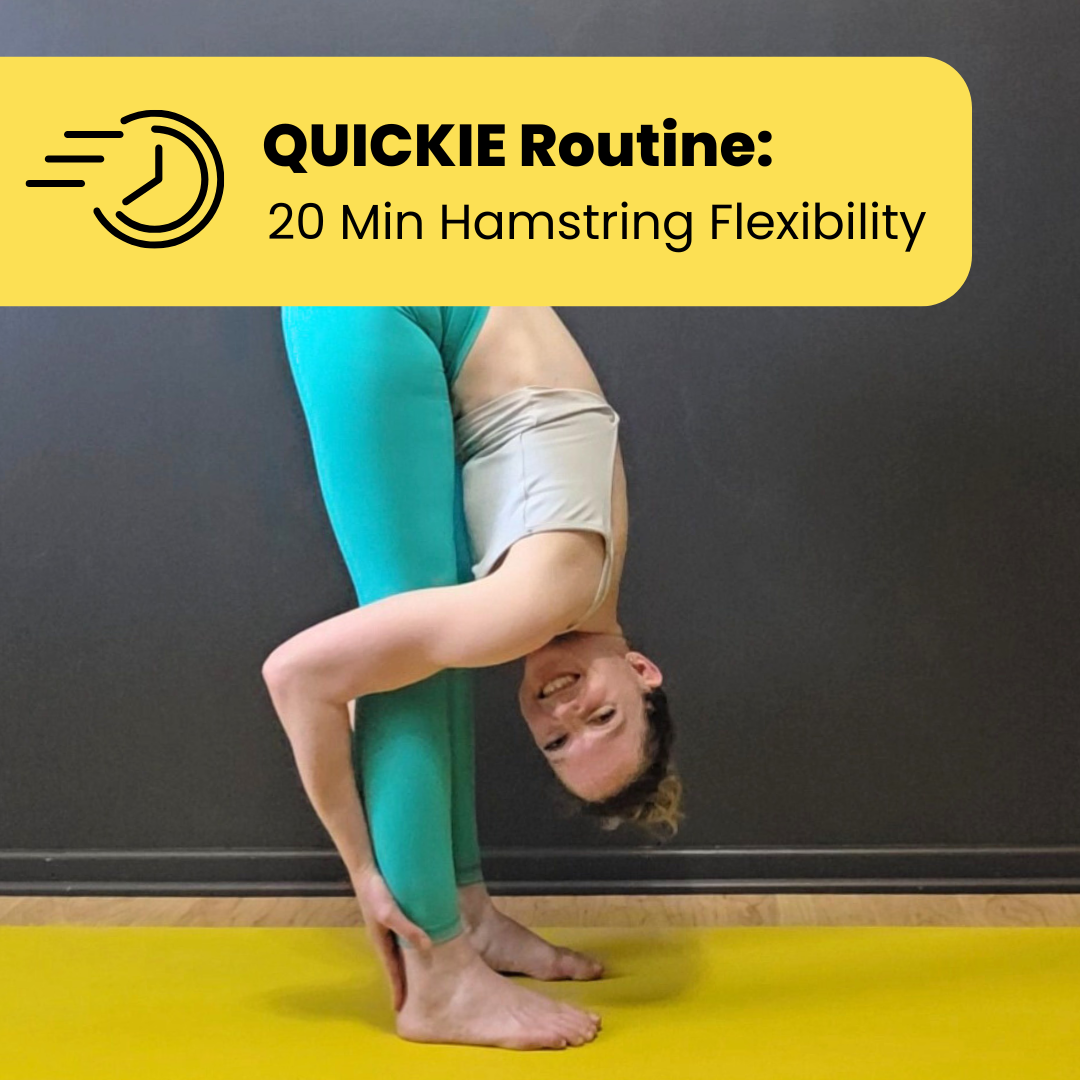Why Are My Hamstrings Tight? (and How to Fix Them)
Why Are My Hamstrings Tight? (and How to Fix Them)
If you have tight hamstrings, you’re not alone! Unless you have a regular stretching practice as part of your workout routine, odds are you can’t touch your toes. Don’t worry, that’s actually a pretty “average” level of flexibility in our era of so much sitting.
But why are they tight? And what can you do to help loosen them up so you aren’t getting so much carry-over tension in your low back?
It’s time for a brief (and simple, I promise!) anatomy lesson…
Hamstring Anatomy for Dummies
Image Credit (with modification): BodyParts3D/Anatomography / CC BY-SA 2.1 JP
What/where are they:
Your hamstrings are a group of three muscles running down the backside of your legs that connect your “sits bones” at the bottom of your hips (the little bony protrusions you can feel underneath your butt when you sit in a chair or on the floor) to the top of your calf and shin bones.
What they do:
When your hamstrings contract and shorten, they help with two common movements:
Bending your knee (knee “flexion”)
Pulling your knee backwards, away from the front of your hips towards your backside (hip “extension”)
When we stretch our hamstrings, we commonly try to do the opposite of these two things to help lengthen them: straighten the leg and/or lean forwards so we bring our knee towards the front of our hips in space.
So Why Are My Hamstrings so Tight?
Your hamstrings may be tight for a variety of reasons.
Lots-o-sitting - The most common culprit is simply sitting a lot. If you spend most of your day sitting in a chair with your knees bent, this means you’re spending most of the day with flexed (shortened) hamstrings, and not letting them stretch through their full range of motion (remember from our Anatomy for Dummies above, hamstrings shorten when they bend our knees!)
Poor posture - A slouching posture with a rounded lower back often goes hand-in-hand with sitting for long periods of time. Any posture that flattens or rounds your low back (against its natural slight curve) will keep your hamstrings in a perpetually shorter state.
Overuse - Your hamstrings may be tight because of exercise (things like running, cycling, and strength training are especially taxing). If you don’t stretch regularly after you exercise, you’re not helping your body “undo” all of that work of repeatedly contracting (shortening) your muscles.
Weakness - On the flip side of the coin, if you have extremely weak hamstrings, your body may have a heightened stretch reflex (the tendency to seize up a muscle to protect it from lengthening to a perceived “dangerous” degree). Working on more active flexibility exercises will help you strengthen while you stretch!
Injury - Similar to weak muscles, if you have an injury (even a many-moons-ago-injury), your body may tighten your hamstrings instinctively to prevent additional damage.
Genetics - Some people are simply born with shorter/tighter hamstrings, or born with a pelvic tilt that stresses the hamstrings. But even for “naturally” less flexy people, stretching can absolutely increase your hamstring flexibility over time.
What’s the “problem” with tight hamstrings anyway?
If you don’t care about being able to touch your toes (it’s not exactly the most exciting of party tricks…), do you really need to bother to work on your hamstring flexibility?
Yes!
(Hopefully this far into reading this blog post that was an obvious answer).
Tight hamstrings are more susceptible to tearing and injury during strenuous exercise such as weightlifting, sprinting, or martial arts. Flexible hamstrings are also beneficial in sports that emphasize flexibility, such as dance, yoga, gymnastics, or circus arts.
Long-term, overly tight hamstrings can lead to low back pain as a result of a pelvic tilt. Tight hamstrings tend to pull on your “sits bones,” tilting the top of your pelvis backwards (“posterior pelvic tilt”), which flattens your natural lumbar curve and causes pressure on the joints in your spine - not fun!
Proper Hamstring Stretching Starts at Your Pelvis
The “need to know” for stretching:
(For my non-anatomy-savvy friends, “posterior pelvic tilt” is the fancy term for when you let your tailbone curl under and the top of your pelvis tilts backwards, rounding your low back and shortening your hamstrings)
It’s all about the pelvis! When stretching your hamstrings, instead of thinking about reaching with your arms, pay more attention to the two areas where your hamstrings connect to your bones: your sits bones, and your lower leg (right below your knee). Think about intentionally trying to lengthen these areas away from each other.
During any hamstring stretch, check in with the position of your pelvis. I like to bring my attention to my tailbone because it’s easy for me to feel where that is on my body. Make sure you’re trying to pull your tailbone up and away from the back of your knees, not letting it tuck and round downwards, this will help ensure you’re actually lengthening your hamstrings.
Common cues for hamstring stretches:
“Keep your low back flat, don’t let it round”
“Stick out your Kardashian booty”
“Lift your tailbone up the wall behind you”
“Lean your belly button towards your thighs”
“Make a duck butt, like you’re lifting your butt and your proud little tail feather”
“Lengthen your sits bones away from the back of your knees”
TL;DR: Just Watch This Video
Too Long; Didn’t Read: If you’re really just skimming this post and only have time to do ONE thing, watch this short video. The music and animations are a little goofy, but this is by far the BEST video I’ve seen that helps illustrate your hamstrings “in action,” and clearly shows why “traditional” hamstrings stretches like a forward fold aren’t very beginner-friendly.
Beginner-Friendly Hamstring Stretches
Stay tuned for my next post where I’ll cover 8 “beginner friendly” (legitimately beginner-friendly, not just fake beginner-friendly according to some yoga article) hamstring stretches. These bad boys have been tested on bodies that cannot sit up straight in a seated L on the floor. If that sounds like you - check them out! [EDIT: Here’s the post!]






